Superb Ww1 American Jewish Fighter Ace Aviation Medal Badge & Documents Pilot
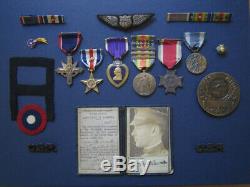
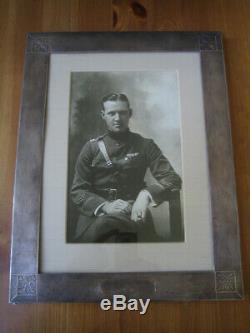
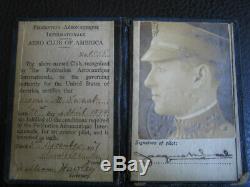
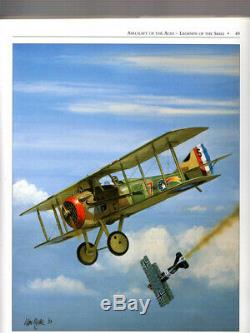
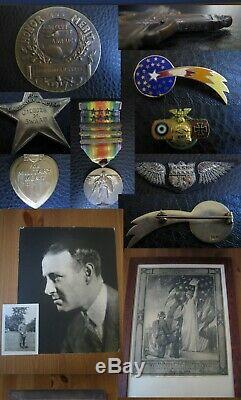
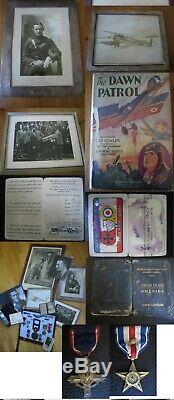
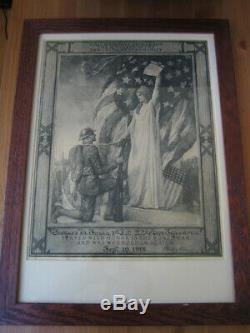
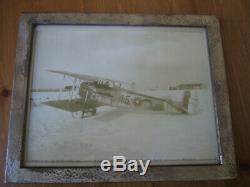
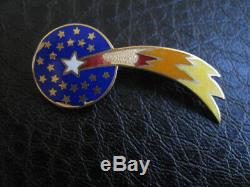
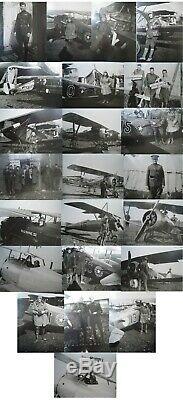
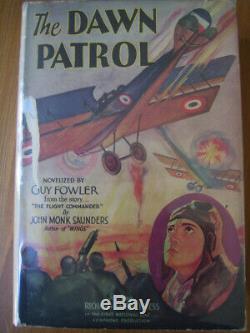

AERO SQUADRON DSC, 2X SILVER STARS AND PURPLE HEART. RECOMMENDED AND APPROVED FOR THE AWARD OF THE MEDAL OF HONOR.
Of American pilots serving exclusively with the US squadrons, Jaques Swaab was the 3. Highest scoring Ace of WW1. The two higher scoring were the Rickenbacker with 26, flying from March 1918 and the remarkable Frank Luke with 18 from July 1918.
Swaab first saw action in September 1918 and spent several weeks in hospital after being wounded, had 10 confirmed and a further up to 7 unconfirmed in just 65 hours in the air! One of, if not the highest of any Nation for hours flown to victories. The first 3 scored on his first flight over the front during an epic encounter in which he was seriously wounded, passed out and crashed his aircraft..
Of all American pilots serving during WW1, Swaab was joint 25. Highest scoring Ace, however the vast majority of the others had served with the RFC or French Air service for a good time (some years), many of these never serving in a US squadron. Distinguished Service Cross, numbered 6256 to Swaab. Silver Star with Oak leaf cluster for second Award, named to Swaab.
Purple Heart, named to Swaab. Victory medal with 3 clasps and 10 silver stars one for each victory.
New York State Conspicuous Service Cross, no2055. New York State WWI Service Medal. Incredibly rare Aero Club of America Award, only given to Aces.
Ribbon bars for above medals. Swaabs Pilot badge, unit patch and collar badges from uniform. Aero Squadron enamel badge, only a handful of these extent. One of the photos in the group shows Swaab wearing his. World War Birds International badge and certificate (no 204).
This was an association of Wartime pilots from all Nations who met for reunions badge shows both Allied and German insignia. Framed Wound Award document named to Swaab, dated September 10, 1918 with facsimile signature of Woodrow Wilson. Fantastic framed studio portrait in uniform wearing the ribbon of the DSC and 22nd Pursuit Squadron pin. Large photo of Swaab in civilian clothes with a lapel pin of the DSC. Framed group photo of Mayor of New York presenting Swaab with a model of a Spad.
Large framed photo of Swaabs Spad in which he shot down most of his victories. Several original photos of Swaab in uniform, with fellow pilots and next to aircraft.
Aero Squadron pilots, Spads, Aces, Swaab etc, many of which have been modern printed and put into a folder. Copy of The Dawn Patrol, original copy with dedication from Swaabs daughter of course Swaab was technical consultant on the film! Huge amount of supporting documentation and research in a large ring binder; recommendations for Medal of Honor and other awards, combat reports, history of 22. Aero Squadron, unit rosters etc etc. Swaabs commander, Ray Brooks, recommended him for the Medal of Honor for Swaabs first flight, as well as subsequent actions flown while Swaab was still recovering from his wounds. Brooks remembered Swaab as being an excellent chap to be with, a well-bred fellow of good background, well taken care of by the ladies in the USA.He was suave and well-educated; Jewish, but not very religious. A millionaires son, when he was 18, Swaab and his fathers chauffeur built a plane in his garage. They flipped a coin to see who would try it first and Swaab won, crashing the contraption into a wall.
After installing a second seat they both managed to get the rebuilt plane into the air, and got good enough to perform simple manoeuvres for local onlookers. It was later, at the School of Aeronautics at Ohio State that Swaab learned he and the chauffeur had been doing things with our airplane that were supposed to be impossible.Swaab volunteered to fly in June, 1917, two months after war was declared and after initial training and a short stint as a flying instructor, he was assigned to the 22nd Aero on 27. August 1918, where he and a lot of other novice pilots would have to do or die in very quick order. After getting in a few practice hops, Swaab made his first combat flight on September 8, 1918.
Why should I flatter myself by saying that I was frightened? N Even those words do not adequately describe my condition. Led by Brooks who had only five trips over the front under his belt, the patrol of newbieswas ordered by Capt.
Bridgman to Stick togetherlearn your planesand be sure to keep inside your own lines. Swaab would be seeing the front for the first time and was to familiarize himself with landmarks.
He recounted what happened during his first combat missionHe had been flying at the rear of a six-plane formation when the leader [Brooks had already turned back with engine trouble] dove away almost vertically, followed in turn by each of the others. Swaab held back, convinced that his comrades were bent on suicide.
Up to that point, he had been flying Nieuports, which had all borne placards instructing their pilots never to dive at more than 120 mph, and nobody had told him that Spad 13s were much sturdier and would hold together in a vertical dive. Swaab prudently took his time coming down through a cloud, expecting to find all of his flight strewn in pieces over the countryside.
Instead, he saw none of them at all. Climbing back above the clouds, Swaab flew west for 20 minutes. When next he descended through the clouds, he spotted an airfield below. Eureka, Im saved, thought Swaab. As he was coming in to land, another aircraft took off and started climbing up at him.Fortunately, I turned in, Swaab recounted, or that crazy nut would have collided with me. It was during his turn that Swaab saw a large gray cross on the tail of what he now recognized as a Fokker DVII. Unaware that a strong northeast wind had been blowing all day, he had made almost no progress in the opposite direction and had thus ended up over a German aerodrome... Swaab recovered from his shock in time to pull around on the equally surprised German and give him a burst of machine-gun fire; the Fokker went down in flames. With one of his two guns jammed and being fired on from the ground by machine gun and archie, Swaab pulled away into the sun, only to find himself being dived on by a 100 enemy planes.
Actually, there were only 10, he explained but I saw each one 10 times! Swaab fired at the leader and saw his antagonist go spinning down. Breaking clear, Swaab again headed west for the nearest hole in the clouds. Just before he reached it, another Fokker got on his tail. Swaab recounted what ensued in his diary. The next instant I saw a group of about 10 Fokkers had enticed me into a game of ring-around-the-rosy, in which the object seemed to be for each one in turn to practice aerial gunnery on me! Fortune permitted me to get closer and closer to a cloudwhen one chap who worked for Buffalo Bill shooting pennies off a blind mans head mistook me for his old partnerand missedgently touching my scalp with three bullets. The cloud had come closer to me and I headed for it when an unfortunate Boche got in the way of some American-made bullets and burst into flames. I made the cloudvrilled a billion metres three times, passed away into semi-consciousness and next found myself pinned under my plane. And French was being spoken!The people argued about my nationality, forgetting that the planes occupant needed assistance until they were awakened by my saying, `Lever ici [lift here]! I knew that phrase perfectlya year of seeing it on every machine had impressed it into my mind. Between them, US units on the ground and formation of Breguet 14B2s of 96. Aero Squadron returning from a bombing mission had witnessed the entire fight and confirmed his three victories.
Swaab was given up for lost by his squadron mates for two days. Even after he rejoined them, it was decided that, behind the cavalier humor, he was badly shaken up by the experience.He was therefore sent south to the mineral spa at Vittel to rest. He was soon joined there by Ray Brooks, who was in a similar condition after an epic dogfight of his ownBrooks and Swaab soon came to the conclusion that returning to the front was preferable to the depressing sight of the physical and mental casualties who arrived at Vittel by the trainfull each day.
Both agreed to cut short their leave and rejoin the 22nd, which by that time had completed its operations over the St. Mihiel sector and was now flying over the even tougher Argonne Forest.
Brooks Medal of Honor statement describes Swaab as still suffering from his wounds when he made his next kills. Swaab quipped, My lip (which he had badly split) was in such great shape that I was sure I would be back in the chewing-gum business a reference to Fleer, his employer before the war. Swaab would become a double ace in little more than a month--a total of 65 hours in the air.
During an interview He told how: Our average flight was an hours duration. We carried a maximum of two hours fuel in the Spad and, many times, like the French, if there was a cloud in the sky we didnt fly. If we flew two hours in the day, we considered it a long day. So even the `on days were short. During that month Swaab developed, according to Brooks, into a marksman and a virtuoso pilot.You can read descriptions of Swaabs subsequent actions in the affidavits collected for Brooks Medal of Honor application on his behalf. They are now part of the Brooks Collection at the Archives of the National Air and Space Museum (I have copies or all).
His recommendation and affidavits is several pages long so for times sake I will just add the Citations for Awards actually received. Swaab's DSC came through in 1920. The President of the United States of America, authorized by Act of Congress, July 9, 1918, takes pleasure in presenting the Distinguished Service Cross to First Lieutenant (Air Service) Jacques M. Swaab, United States Army Air Service, for extraordinary heroism in action while serving with 22d Aero Squadron, 2d Pursuit Group, U. Near Montfaucon, France, 28 September 1918, and in the region of Champignuelle, 27 October 1918.
On September 28 Lieutenant Swaab, although himself pursued by two enemy planes, perceiving one of his comrades in distress and in danger of being shot down, dived upon the enemy plane which was directly behind that of his comrade and shot the enemy plane out of control, forcing it to withdraw. His prompt act in going to the assistance of his comrade enabled the latter to escape.
On October 27 Lieutenant Swaab and another member of his group engaged in combat with seven enemy planes. In this encounter, although outnumbered, Lieutenant Swaab continued in his attack and succeeded in shooting down an enemy D. By direction of the President, under the provisions of the act of Congress approved July 9, 1918 Bul. 1918, First Lieutenant (Air Service) Jacques M.
Swaab, United States Army Air Service, is cited by the Commanding General, American Expeditionary Forces, for gallantry in action and a silver star may be placed upon the ribbon of the Victory Medals awarded him. First Lieutenant Swaab distinguished himself by gallantry in action while serving as a Pilot with the 22d Aero Squadron, 2d Pursuit Group, American Expeditionary Forces, in action near Metz, France, 8 September 1918, while on an aerial patrol over enemy lines. First Lieutenant Swaab distinguished himself by gallantry in action while serving as a Pilot with the 22d Aero Squadron, 2d Pursuit Group, American Expeditionary Forces, in action near Thiaucourt, France, 31 October 1918, while leading a patrol.
Notice there is no reference to Swaab's exploit's on September 8, 1918!!! But the citation cherry picks two of the list of dates offered by Brooks in his MOH application which did include the September 8. Among his other victories, On 23 October Swaab shot down in flames a Fokker D.VII that had just destroyed an American balloon. Evidence suggests his opponent was German 26 Victory Ace Max Näther. Of Jasta 62, who amazingly survived the terrifying ordeal.
Blowing up an aircraft 2000 meters from the ground and almost being upset in the process was the experience of Swaab on 31. October 1918, his last Official victory.I was flying last man in our patrol and had just headed north east, when looking below and behind I saw an LVG heading in a westerly direction over Trieourcourt, I signalled to the pilot in front and seeing no other planes, I dived on the LVG.. It turned and headed for its own lines and climbed very rapidly.
I climbed from 2000 to 3300 meters, following it and reserving my fire until within 100 feet behind and below it. We were then at between two to four miles from Verdun. Lieutenant Swaab then opened fire letting go about 260 rounds which seemed to go right through the fuselage close to the pilot and observer.
When there was an explosion Said Swaab The LVG flying into pieces. The explosion shook my plane, throwing it up and momentarily out of control as I was but a short distance away. It had a dark green and black fuselage, wings, tail, white lines making cross on tail. As Commander of B Flight, 22. Aero Squadron, Swaab finished the War with 10 confirmed and up to another 7 unconfirmed Victories. He was highest scoring pilot of 22. Pursuit Group to which 22.Victories 4, 8 and 9 were shared with another pilot. He was technical advisor on Howard Hawks 1930 film, the original Dawn Patrol with Douglas Fairbanks, Jr. Although a lot of sites state Swaab worked on the 1938 version. He was an early member of Cross and Cockade and the main speaker at the August 17, 1962 meeting. He died a year later of heart trouble and was buried at Arlington National Cemetery, his squadron mate Ray Brooks present along with other notables including General Carl Spaatz.
Swaab flew a Spad XIII with the bore the name Mayer II benneth the cockpit in honour of his Father and a star for each victory placed round the units comet insignia. In the large files I have of Swaab, are copies of the recommendation by Brooks for the Congressional Medal of Honor on April 1, these are signed as approved by the board but nothing further seems to have come of actually receiving the Award. Rickenbacker himself had to lobby well into the 1920s to have his Awarded, perhaps Swaab just didnt feel it worth perusing. On another note, there are surprising similarities between Swaab and the group I also have to German fighter pilot Jakob Wolff ; both of course Jewish, both very rich and neither needed to serve and both were in the cigarette/cigar industry!PLEASE NOTE; If you have any questions and require more images please get in touch or contact me directly at jagermedals and I will send you what you need. SEE MY OTHER AUCTIONS FOR SIMILAR ITEMS. Keywords; Aircraft plane pilot jasta photos aviation medal flieger flugzeug album photoalbum fabric insignia observer rfc rnas royal flying corps raf royal air force naval air service seeflieger marineflieger medal. The item "SUPERB WW1 AMERICAN JEWISH FIGHTER ACE AVIATION MEDAL BADGE & DOCUMENTS PILOT" is in sale since Friday, May 24, 2019.
This item is in the category "Collectables\Militaria\World War I (1914-1918)\Medals/ Ribbons". The seller is "albatrosj1" and is located in SCOTLAND. This item can be shipped worldwide.

